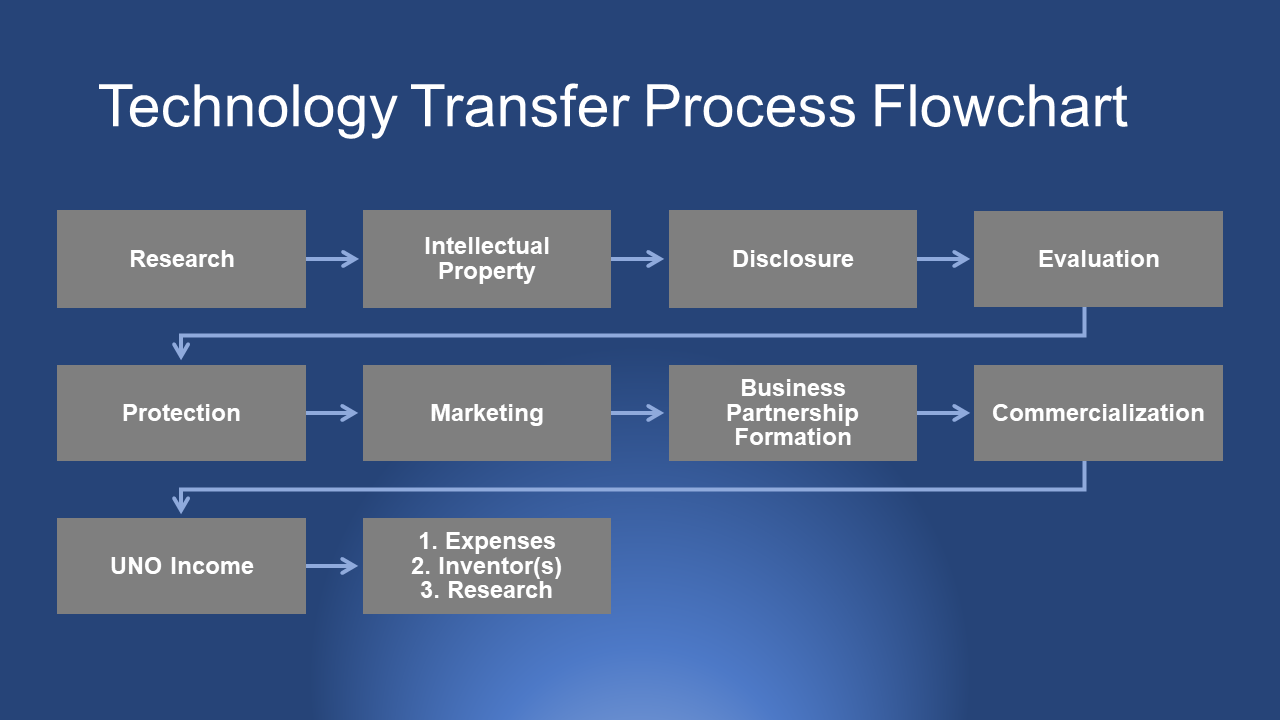Who creates inventions?
The researcher (faculty, staff, or student) who made a creative contribution to at least one of the issued claims in a patent created an invention. Someone who assisted the inventor, such as a lab technician or student who ran tests directed by the inventor, did not create an invention. Inventorship is defined under patent law. Sometimes, inventorship cannot be determined until the patent is issued—claims may change during prosecution (if, for example, certain claims get disallowed).
Why must I (and should I) disclose my inventions and discoveries?
Disclosing your inventions and discoveries is a requirement of being a employee of the University of New Orleans. If your research was funded in whole or in part by a federal, state, or industrial grant/contract, you are required to file a Technology Disclosure of a possible invention under terms of the grant. The University in turn, is required to notify the sponsor. For federal grants, the University must report the invention to the sponsoring agency within 60 days and actively work to commercialize the technology. This is to meet the requirement that federally funded inventions should be licensed for commercial development. If the invention has commercial value, not disclosing the invention can lead to loss of royalty income that is shared by the institution with the inventor(s) according to its policies.
When should I disclose my inventions and discoveries?
You should file the Technology Disclosure Form as soon as you realize your research has uncovered something new and useful—two of the key elements for patentability. While the experimental work need not be complete, a clear and complete written description is required. A working model is not required. Drawings and a written description are sufficient.
When can a researcher publish his/her findings?
Researchers are generally free to publish or make public disclosures of their findings at any time, in any media of their choice, limited only by other previously entered contractual obligations. However, a public disclosure can destroy most non-U.S. patent rights immediately if the patent application has not already been filed. U.S. rights are lost if the patent application is not filed within twelve months of the publication or presentation or someone else files the patent application first. In most cases, filing a U.S. patent application before the first publication or presentation will temporarily preserve the right to file outside the U.S. It is best to consult with the Director for External Collaboration before any publication is submitted, if there might be a possible valuable invention being disclosed in it.


